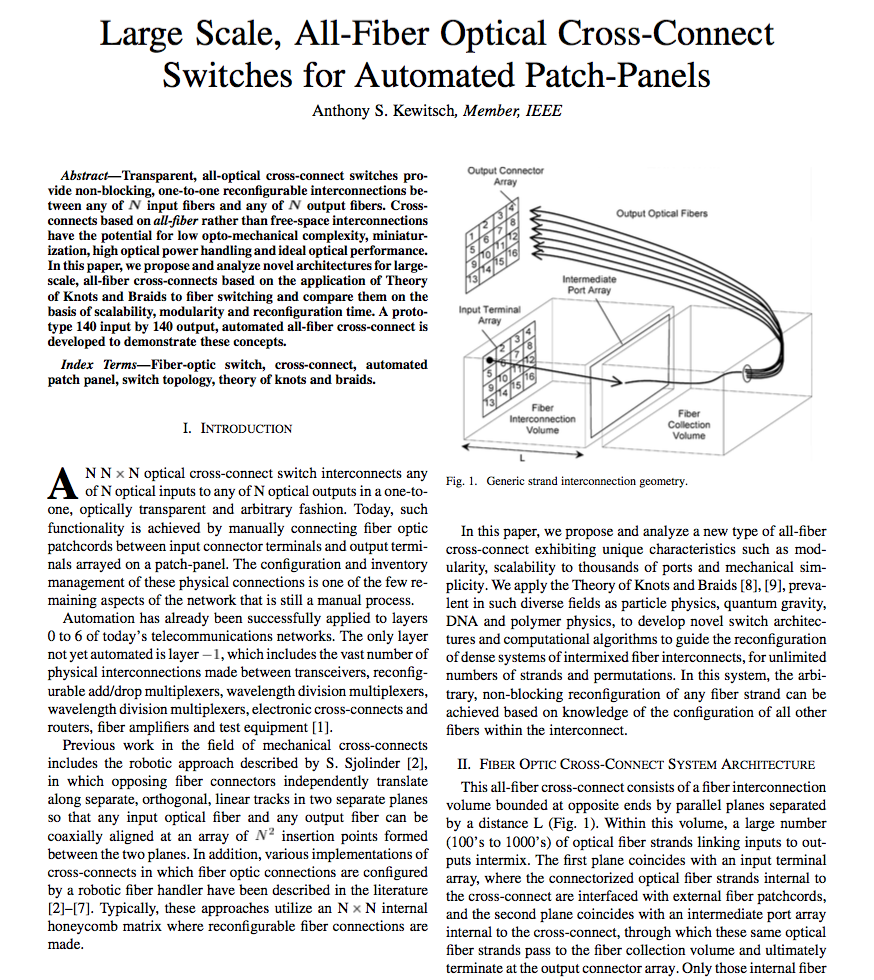Software Defined Networking
Software Defined Networking (SDN) is a network architecture shift revolutionizing the design and operation of networks. SDN virtualizes the Local Area Network (LAN) and eventually the Wide Area Network (WAN). Today SDN focuses on Layers 2-3, with the ultimate goal of providing programmability and optimization across all layers. Telescent enables SDN concepts to be extended to the Physical Layer, so physical network topologies and configurations can be managed dynamically based on the workflow requirements of Layer 7, the application layer.
The Telescent G4 NTM unlocks a new set of traffic engineering capabilities. Physical Layer fiber switching is the lowest cost way to provision and optimize the data center’s core network topology. It is a well accepted fact that the cost of switching is minimized by pushing switching functionality down the network stack to the Physical Layer. This ability to switch fiber on demand by a software driven process eliminates human intervention and adds significant capabilities to the overall SDN tool box.
Physical Layer Switching
Telescent offers the Gen3 Network Topology Manager (NTM), a SDN Patch Panel incorporating an all-fiber, automatically reconfigured cross-connect that is scalable and modular to >1,000 x 1,000 nonblocking duplex ports (or >2,000x 2,000 nonblocking simplex ports). This system is low cost by design serving a large number of interconnects. It exhibits an insertion loss identical to manual solutions by utilizing industry standard LC/UPC, LC/APC, or LC/PC connectors and an all-fiber core.
This physical network configuration management system enables new types of network management automation tools to be deployed in production networks for remote reconfiguration, monitoring and sharing of physical network assets across a distributed network, as well as physical layer validation testing, provisioning and discovery. This software-defined patch-panel is based on a novel all-fiber, latching matrix switch utilizing a unique architecture and sophisticated control algorithms.
The fiber routing computation implements our unique Knots and Braids Switching (KBS) algorithm, based on Telescent’s advances in the mathematics of Topology and Braid Theory. As a direct consequence of KBS, the G4 NTM is the only solution whose size, cost and complexity scales linearly as N, the number of interconnects. All other competing methods scale quadratically with N, imposing much higher costs and limited port counts.


